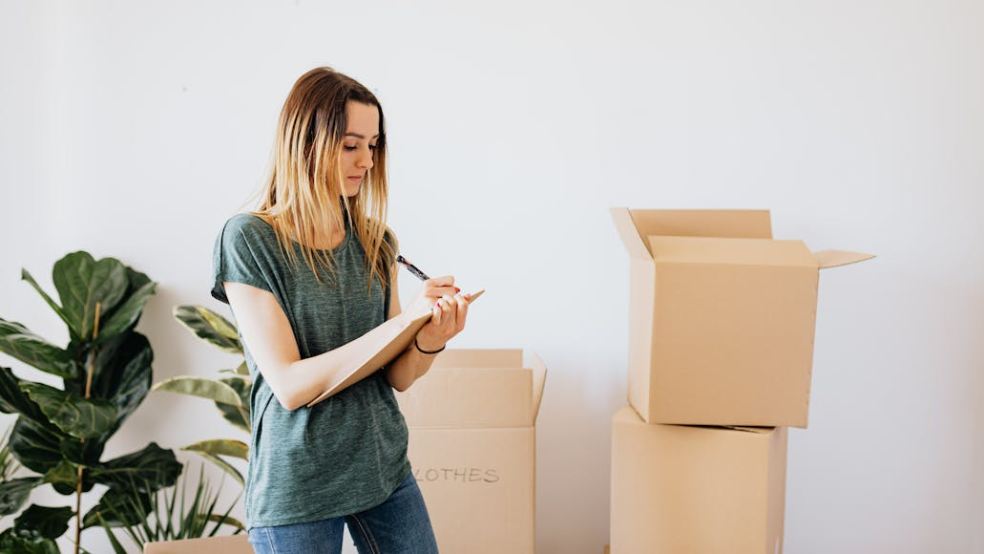
8 Expert Tips to Make Moving Stress-Free
Moving house is often stressful, especially when you're juggling it with your busy life. While it's true that you're the expert on your belongings, doing it all alone can be exhausting and take more time than expected. But here’s the good news: with the right planning and some expert advice, your move can be smooth and even enjoyable. Here are 8 practical tips gathered by Getamover.co.uk to help make your move easier and stress-free.
1. Start Planning Early
The earlier you plan, the smoother the move. While weekends may seem convenient, they often lead to higher costs and more traffic, which can make unloading a headache and cause delays, increasing moving expenses.
A smarter option? Moving on a weekday, which is usually cheaper with less traffic. Many moving companies also offer discounts or promotions for weekday moves, making it a cost-effective choice. Plus, avoiding rush hours (early morning or late afternoon) makes the process easier on your schedule, and your wallet will thank you.
2. Book a Professional Cleaning Service
One often overlooked step is making sure your new home is spotless before the furniture arrives. Booking a deep clean ahead of time reduces the stress you will get from trying to clean around boxes and furniture later. It’s a simple step that makes the move-in process much smoother and more enjoyable.
3. Declutter Before Packing
Before you start packing, give yourself some breathing room by decluttering. We all have items tucked away—things we’ve convinced ourselves we’ll use “someday.” But let’s not forget: a new home deserves a fresh start.
Start by sorting your belongings and deciding what to keep, donate, sell, or toss. Selling unused items on local marketplaces can even help cover part of your moving costs—a win-win! And fewer things to pack means fewer boxes to move, reducing your moving expenses even further.
4. Gather Supplies in Advance
Before you start packing, make sure you’ve gathered all the essential supplies—boxes, packing paper, bubble wrap, markers, and tape. Be sure you have enough boxes for the move. You can also stop by local supermarkets or stores and ask for unused boxes.
To help you get started, here’s a quick guide on how many boxes you’ll typically need based on the number of rooms in your home.

5. Pack Smart
-
Handle Fragile Items with Care: For fragile items like glassware, plates, or electronics, use dividers and wrap each item individually with packing paper or bubble wrap. For valuables or sentimental items, consider hiring professional packers who can provide specialty boxes for TVs, artwork, or mirrors.
-
Maximize Box Space: Fill every box completely to prevent collapse during transit. If you have empty spaces in a box, use towels, linens, or packing peanuts to fill the gaps.
-
Make an Essentials Box: Pack an “essentials” box that includes items you’ll need right away at your new home. This should include toiletries, basic kitchenware, a change of clothes, important documents, chargers, and anything else you’ll want easy access to during the first couple of days in your new place.
-
Balance Weight and Strength: Avoid overpacking heavy items. Keep boxes manageable (30–50 pounds), placing heavier items on the bottom and lighter ones on top to prevent crushing.
Before packing, consider requesting removal quotes from various companies to compare services and ensure your movers are prepared for the task.
6. Label Clearly
Label each box with its contents and the room it belongs to. Take it a step further by labeling the doors in your new home with the corresponding room names. This way, both you and your movers can easily place everything in the right spot, saving you from having to do it all later.
It’s also a good idea to mark whether a box is heavy, fragile, or contains high-value items. While breakages are usually covered by the moving company's insurance, working with a reputable company ensures additional peace of mind. Look for movers accredited by the British Association of Removers (BAR), as they adhere to strict professional standards and provide clear terms for insurance and care during the move.
7. Create a Moving Day Checklist
Stay organized by creating a checklist for tasks before and after moving day. Here are some examples:
-
Disconnect utilities at your old home and arrange connections at your new one, including electricity, water, gas, and internet.
-
Update your change of address with the post office, banks, insurance providers, and any other important contacts.
-
Book a cleaning service for your old home, especially if you're renting, and document its condition to ensure your deposit is returned.
-
Record final utility readings for reference and submit them to the providers to avoid unexpected costs.
8. Handle Moving Day Like a Pro
On moving day, staying organized is key. Keep small parts like screws and bolts from furniture in labeled freezer bags and tape them to the corresponding pieces. Move your furniture into the house first to avoid shifting boxes later, and protect high-traffic areas by laying down flattened cardboard boxes.
Most importantly, don't forget to look after yourself! Moving can be physically and mentally exhausting, so take regular breaks, stay hydrated, and snack on healthy foods to keep your energy up











